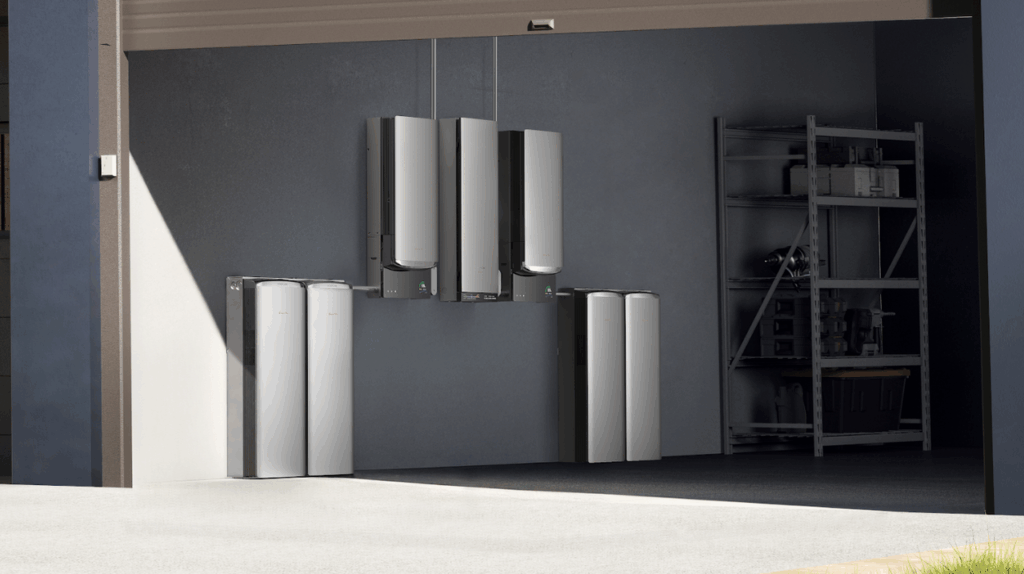When severe weather strikes and the power grid fails, having the right-sized solar battery system can mean the difference between comfort and crisis. Yet many homeowners face a critical challenge: determining exactly how much battery capacity they need to keep essential appliances running during an outage.
Whether you’re protecting a vital medical device, preserving food in your refrigerator, or maintaining basic lighting and communication, understanding your home’s energy requirements is crucial. This guide will walk you through a practical, step-by-step approach to sizing your solar battery system, ensuring you can power what matters most when the grid goes down.
We’ll break down complex energy calculations into simple terms and help you make an informed decision about your home’s backup power needs.
Why Solar Battery Size Matters for Home Backup Power
Choosing the right solar battery size is crucial for reliable home backup power, as the consequences of incorrect sizing can be significant. An undersized system may fail during critical moments, leaving essential appliances powerless when you need them most. Imagine your refrigerator shutting down during a multi-day outage, leading to food spoilage, or medical devices losing power during emergencies.
Conversely, oversizing your battery system means investing thousands of unnecessary dollars in capacity you’ll rarely use. Solar batteries serve as the bridge between intermittent solar generation and your home’s continuous power needs, storing excess energy for use during nighttime or outages.
During short brownouts lasting a few hours, even a modest battery can maintain essential services. However, extended emergencies like severe storms or grid maintenance require careful capacity planning to ensure multiple days of reliable backup power. Understanding these real-world scenarios helps homeowners make informed decisions about their energy storage needs, balancing cost with peace of mind.
Calculating Your Home’s Essential Energy Needs
Identifying Critical Appliances and Wattage
The foundation of proper solar battery sizing begins with a thorough assessment of your essential appliances. Most households prioritize refrigeration, which typically requires 150-200 watts but can surge to 600 watts during compressor startup. Medical devices like CPAP machines (30-60 watts) and oxygen concentrators (100-400 watts) demand consistent power.
Basic lighting using LED bulbs consumes 5-10 watts per bulb, while communication equipment such as Wi-Fi routers and cell phone chargers collectively draw 10-20 watts. Modern security systems, including cameras and monitoring stations, add another 50-100 watts to your baseline needs.

Estimating Daily Kilowatt-Hour (kWh) Consumption
To calculate your daily energy requirements, multiply each appliance’s wattage by its hours of use and divide by 1000 to convert to kilowatt-hours. For example, a 180-watt refrigerator running 24 hours consumes 4.32 kWh daily (180W × 24h ÷ 1000). Smart energy monitors provide precise measurements, while utility bills offer monthly averages that can be divided for daily estimates.
Consider usage patterns carefully – while some devices run continuously, others like microwaves (900-1500 watts) operate briefly but draw significant power. For accuracy, track your appliances’ energy consumption over several days using a plug-in power meter, particularly during peak usage times. Remember that many devices have varying power states, such as smart TVs that draw 100 watts while active but only 5 watts in standby mode.
Understanding Solar Battery Specifications
Capacity (kWh) vs. Power Output (kW)
Understanding solar battery specifications requires grasping two fundamental metrics: capacity and power output. Think of capacity (measured in kilowatt-hours or kWh) as your battery’s fuel tank size – it determines how long your appliances can run. Power output (measured in kilowatts or kW) represents how much electricity your battery can deliver simultaneously, similar to a pipe’s flow rate.
Modern systems like the EcoFlow home battery solutions can deliver high power output while maintaining stable performance, essential for running demanding appliances like well pumps or air conditioners that may require 3-5kW of instantaneous power, even if they run briefly. Without sufficient power output, these appliances won’t start, regardless of your battery’s total capacity.
Depth of Discharge and Usable Energy
Depth of Discharge (DoD) represents the percentage of battery capacity you can safely use without damaging the system. Modern lithium-ion batteries typically offer 90-95% DoD, meaning a 10kWh battery provides about 9kWh of usable energy. In contrast, traditional lead-acid batteries limit DoD to 50%, requiring double the rated capacity for the same usable energy.
Battery chemistry significantly impacts longevity – lithium-ion systems maintain performance for 6,000-8,000 cycles, while lead-acid may degrade after 200-300 deep cycles. Understanding these specifications ensures your battery system delivers reliable power throughout its lifespan while maintaining optimal performance.
Key Factors Influencing Solar Battery Sizing
Backup Duration Requirements
When planning your solar battery system, backup duration needs vary significantly based on your location and risk factors. A 12-hour backup might suffice in areas with reliable grid service and quick utility response times. However, regions prone to severe weather events or aging infrastructure should consider 72-hour or longer backup capacity.
Climate patterns play a crucial role – northern locations facing winter storms may need extended backup during periods of minimal solar generation. Similarly, hurricane-prone coastal areas should account for potential week-long outages during storm season.
Solar Panel Integration and Recharge Rates
Your solar array’s size directly impacts how quickly batteries recharge during daylight hours. A properly sized system should replenish at least 80% of the previous day’s energy consumption. For instance, a home using 15kWh daily needs solar panels capable of generating 18-20kWh to maintain reliable backup power.
Seasonal variations in sunlight can create “stranded capacity” – where batteries can’t fully recharge during short winter days or extended cloudy periods. To prevent this, consider increasing solar capacity by 20-30% above minimum requirements in areas with frequent overcast conditions. This ensures consistent battery charging even during suboptimal weather conditions.
Step-by-Step Solar Battery Sizing Guide
Accurately sizing your solar battery system starts with a systematic approach that eliminates guesswork. Begin by creating a comprehensive list of essential appliances and their daily runtime hours – include everything from refrigerators to medical devices. Next, calculate your total daily energy needs by multiplying each appliance’s wattage by its usage hours and converting to kilowatt-hours.
For multiple-day backup, multiply your daily total by the number of days you want to maintain power. Account for battery efficiency by dividing this figure by the depth of discharge rating – for a 90% DoD battery, divide by 0.9 to determine actual capacity needed. Verify that your chosen system can handle peak power demands by adding up the wattage of devices that might run simultaneously.
This is particularly important for high-draw appliances like well pumps or air conditioners that require significant startup power. Finally, incorporate a 10-20% safety buffer to account for unexpected usage spikes and battery degradation over time.
For example, if your calculations show you need 10kWh of daily backup, aim for a 12kWh system to ensure reliable performance. Keep your sizing checklist handy: essential loads listed ✓, usage hours documented ✓, peak demands verified ✓, DoD adjusted ✓, and safety margin added ✓. This methodical approach ensures your battery system meets both immediate needs and future demands.
Real-Life Solar Battery Sizing Scenarios
Small Home Essentials (Basic Backup)
A typical small home backup scenario focuses on maintaining core functionality during outages. With a refrigerator consuming 4.3kWh daily, LED lighting using 0.5kWh, and network equipment drawing 0.2kWh, the total daily requirement reaches 5kWh. For 1.5 days of reliable backup, a 10kWh battery system provides adequate coverage while accounting for efficiency losses.
Medium Household (Critical Loads Coverage)
Medium households often include medical equipment and heating requirements alongside basic needs. Adding a CPAP machine (0.5kWh daily), furnace blower (3kWh daily), and additional lighting zones brings daily consumption to 15kWh. A 20kWh battery system ensures continuous operation through 24-hour outages while maintaining sufficient power reserve for unexpected demands.
Large Residence (Extended Backup)
Large homes with well pumps and climate control systems face more complex energy requirements. A well pump cycling several times daily (5kWh), central air conditioning (10kWh), comprehensive lighting (2kWh), and multiple appliances push daily usage to 30kWh.
Installing a 40kWh battery system provides full-day coverage while accommodating peak demands from simultaneous operation. This sizing also ensures sufficient capacity for morning and evening usage peaks when solar generation may be limited.
Making an Informed Solar Battery Investment
Selecting the right solar battery size requires careful consideration of your unique power needs and circumstances. By following a systematic approach to calculating your daily energy requirements, understanding battery specifications, and accounting for critical factors like backup duration and recharge capabilities, you can build a resilient home power system that performs when you need it most.
Remember that the key to successful sizing lies in the details – start by documenting your essential appliances’ power requirements, verify potential surge demands, and always factor in battery efficiency ratings. While DIY calculations can guide initial planning, complex setups involving medical equipment or well pumps may benefit from professional energy audits.
Take the first step today by creating an inventory of your critical appliances and their usage patterns. This foundation will help you make an informed decision about your solar battery system, ensuring reliable backup power that protects what matters most during grid outages.

